Assess and manage risks
Enablers
- Determine risk management approach. (ECO 2.3.1)
- Iteratively identify, assess and prioritize risks and risk responses. (ECO 2.3.2)
- Determine risk response.
- Implement risk response.
Deliverables, and Tools

Risk
A risk * is an uncertain event or condition that, if it occurs, has a positive or negative effect on one or more project objectives.
A trigger condition * is an event or situation that indicates that a risk is about to occur.
Primary components include:
- A measure of probability that the risk event will occur.
- The impact of the risk occurring on a project.
- Positive risks: Risks that produce a positive project outcome.
- Also referred to as opportunities.
- Negative risks: Risks that have a negative impact on the project.
- Also referred to as threats.
Risk Management Plan
A risk management plan * is a component of the project, program, or portfolio management plan that describes how risk management activities will be structured and performed.

Risk Management Approach
Project Risk Management*: The project management knowledge area that includes the processes of conducting risk management planning, identification, analysis, response planning, response implementation, and monitoring risk on a project.

Risk Classification
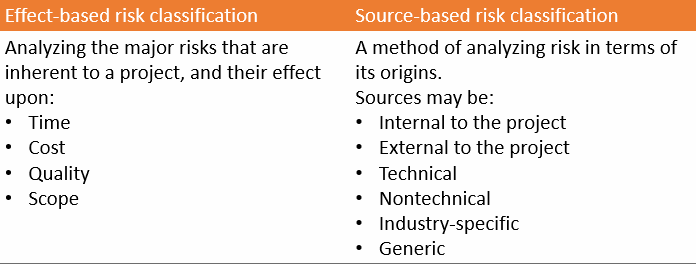
Business Risk Types
Business risk
- Inherent in business.
- All projects have potential for loss or profit.
- Example: Purchasing inventory without guaranteed sales.
Insurable risk
- Only the potential for loss.
- No potential for profit.
- Insurance may be purchased to offset losses.
- Example: Loss of inventory due to fire.
Business Risk Types
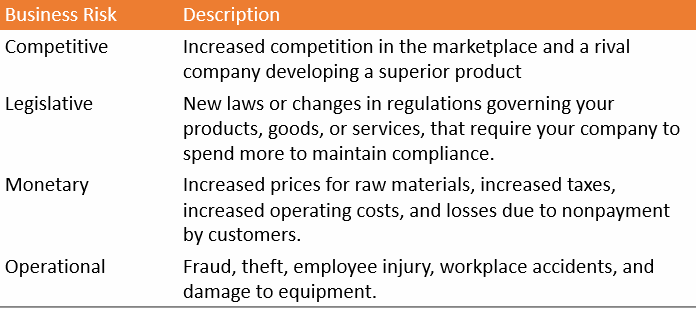
Risk Tolerance, Appetite, and Threshold
- Risk tolerance refers to the maximum amount of risk, and the potential impact of that risk occurring, that a project manager or key stakeholder is willing to accept.
- Risk appetite * is the degree of uncertainty an organization or individual is willing to accept in anticipation of a reward.
- Risk threshold * is the level of risk exposure above which risks are addressed and below which risks may be accepted.
Guidelines to Iteratively Identify, Assess, and Prioritize Risks
- Perform a structured review of appropriate documentation from other planning processes with key project stakeholders to ensure an understanding of each.
- Use one or more risk identification techniques to identify risks and their possible triggers.
- Be consistent. Whatever method you adopt, apply it systematically across your project. Before the project begins, identify risks in every project segment and work package.
- Apply your method consistently, but be on the lookout for special circumstances that might arise in any project segment.
- Consult relevant historical information such as risk response plans and final reports from previous, similar projects that may include lessons learned describing problems and their resolutions.
- Once risks have been identified, group them into categories that reflect common sources of risk for your industry or application area.
- Use the results of your analysis to initiate the risk register.
Qualitative Risk Analysis
- Qualitative risk analysis is a technique used to determine the probability of occurrence and the impact of each identified risk.
- Determine the risk exposure to the project of a particular risk, multiply its probability and impact.
- Provides the list of prioritized risks for further actions.
Probability and Impact Matrix
The probability and impact matrix * is a grid for mapping the probability of occurrence of each risk and its impact on project objectives if that risk occurs.
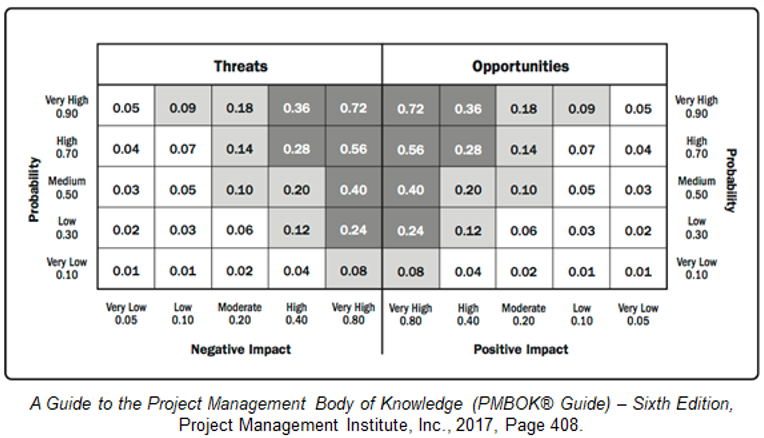
Quantitative Risk Analysis
Quantitative risk analysis is a technique used to assess the risk exposure events to overall project objectives and determine the confidence levels of achieving the project objectives.
- Helps to identify time and cost contingencies of a project
- Refines and enhances the prioritization and scoring of risks
Risk Responses
- Planning risk responses consists of developing options, selecting strategies, and agreeing on actions to address overall project risk exposure, as well as to treat individual project risks.
- Risks are addressed by priority, and resources and activities can be added to the budget, schedule, and project management plan to support the risks.
- Each risk is assigned a risk response, which is an action to address that risk and a person to implement that action.
- There are various risk response strategies to choose from to determine a risk response for each risk.
- A fallback plan can also be developed in case the primary strategy is not effective. Secondary risks should also be reviewed. These are risks that could occur as a result of implementing a risk response.
Negative Risk Strategies
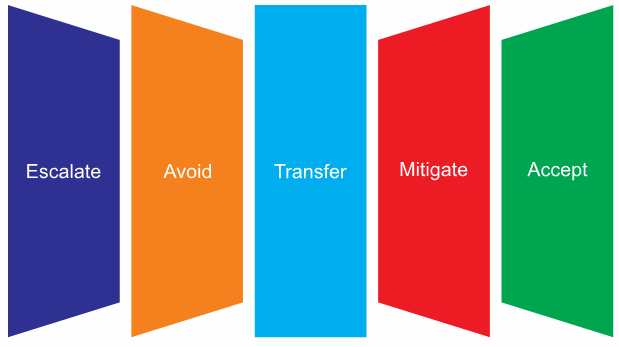
Positive Risk Strategies
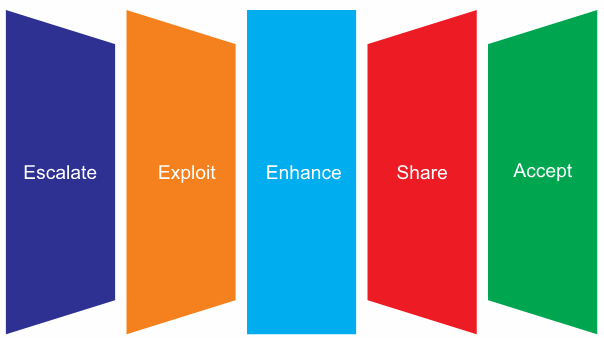
Contingency Plans
- A contingency plan is a risk response strategy developed in advance, before risks occur; it is meant to be used if and when identified risks become reality
- Allows a project manager to react quickly and appropriately to the risk event, mitigating its negative impact or increasing its potential benefits.
- A contingency plan may include a fallback plan for risks with high impact.
- The fallback plan is implemented if the initial contingency plan is ineffective in responding to the risk event.
Guidelines to Determine and Implement Risk Responses
- Examine each identified risk to determine its causes and how it may affect project objectives. Brainstorm possible strategies for each risk.
- Choose the response strategy that is most likely to be effective for each identified risk.
- If you are unable to bring a risk's rating below the organization's risk threshold, ask your sponsor for help.
- Identify backup strategies for risks with high risk factor scores.
- Determine the amount of contingency reserves necessary to deal with identified risks.
- Determine how much of a contingency reserve you should set aside for unknown risks.
- Consult the risk management plan for the description of the content and format of the risk response plan.
- Incorporate the risk response plan into the overall project plan so the strategies can be implemented and monitored.